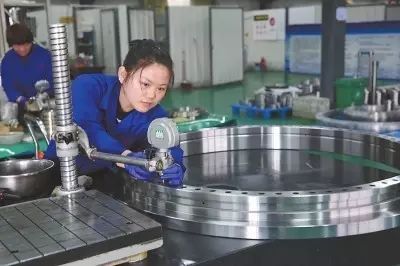Rolling bearing preload methods are divided into two categories: radial preload method and axial preload method:
1. Radial preload method
The radial clamping method is mostly used in bearings with tapered bores that are subjected to radial loads, and a typical example is a double-row precision short cylindrical roller bearing. The nut is used to adjust the axial position of this kind of bearing relative to the tapered journal, so that the inner ring has an appropriate amount of expansion to obtain radial negative clearance. This method is mostly used in machine tool spindles and jet engines.
2. Axial preload method
The axial preload method can be roughly divided into two types: positioning preload and constant pressure preload.
In the positioning preload, the appropriate preload can be obtained by adjusting the size of the bush or gasket; the appropriate preload can also be adjusted by measuring or controlling the starting friction torque; the pre-adjusted preload can also be directly used The purpose of preloading is realized by the paired duplex bearings, at this time, the user generally does not need to adjust again. In short, the relative position of any axially preloaded bearing will not change during use.
Constant pressure preloading is a method of using coil springs, disc springs, etc. to obtain proper preloading of bearings. The rigidity of the preloaded spring is generally much smaller than that of the bearing, so the relative position of the bearing with constant pressure preloaded will change during use, but the preloaded amount is roughly unchanged.
The comparison between positioning preload and constant pressure preload is as follows:
(1) When the preload is equal, the positioning preload has a greater effect on the increase of the bearing rigidity, and the influence of the rigidity change on the bearing load during the positioning preload is much smaller.
(2) Positioning preload In use, due to the axial length difference caused by the temperature difference between the shaft and the bearing seat, the radial expansion caused by the temperature difference between the inner and outer rings, and the displacement caused by the load, etc., the preload will The amount changes; while the constant pressure preload is in use, the change of the preload is negligible.


